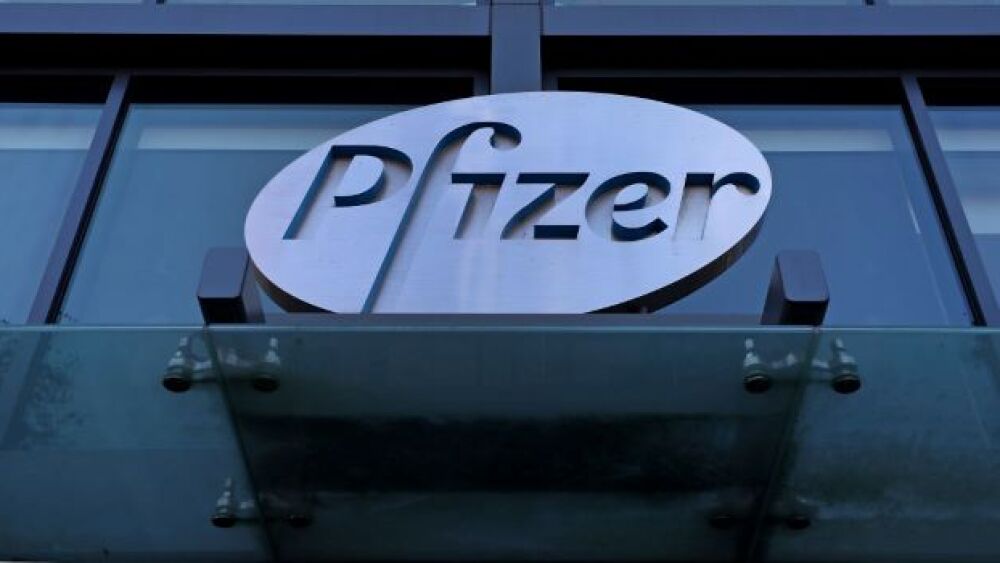Early data from the Phase III TALAPRO-2 study showed Talzenna, Pfizer’s oral PARP inhibitor, met its primary endpoint in metastatic castration-resistant prostate cancer patients.
David L. Ryan/The Boston Globe via Getty Images
Early data from the Phase III TALAPRO-2 study showed Talzenna (talazoparib), Pfizer’s oral PARP inhibitor, met its primary endpoint in metastatic castration-resistant prostate cancer patients, the company announced Tuesday.
Patients treated with Talzenna in combination with Xtandi (enzalutamide), also a Pfizer drug, saw a clinically meaningful improvement in radiographic progression-free survival (rPFS) compared to those who received Xtandi with placebo. The results yielded a hazard ratio exceeding the pre-specified threshold of 0.696.
TALAPRO-2 is a randomized and double-blinded trial consisting of two mCRPC patient cohorts: 750 all-comers and 380 men with mutations in the homologous recombination repair gene. Only patients who had not received systemic treatments after being diagnosed with mCRPC were eligible. Talzenna was given at a 0.5-mg/day dose, while Xtandi was administered at 160 mg/day.
Aside from rPFS, TALAPRO-2 looked at key secondary endpoints and found benefits associated with Talzenna, though data are not mature as of the moment. Patients in the active treatment arm showed a trend toward better overall survival, overall response rate, prostate-specific antigen (PSA) response and time PSA progression.
The combination of Talzenna and Xtandi had a safety profile that was consistent with what had previously been established for each drug.
In a statement, Chris Boshoff, M.D., Ph.D., chief development officer of oncology and rare disease at Pfizer, said that while definitive comparisons across trials could not be accurately made, TALAPRO-2 appears to have yielded the longest rPFS.
If approved, this could position the Talzenna-Xtandi combo as a new standard of care in mCRPC patients, Boshoff said.
“Based on these compelling combination data with XTANDI, we believe TALZENNA in prostate cancer may become the next potential blockbuster opportunity in our leading Pfizer Oncology portfolio, subject to regulatory approval,” added Suneet Varma, global oncology and U.S. president at Pfizer.
The company will reveal a more detailed analysis of TALAPRO-2 in an upcoming medical congress. Data will support regulatory filings for Talzenna in mCRPC.
Clovis Also Nabs mCRCP Win with Rubraca
On Monday, Clovis Oncology announced that monotherapy with its oral drug Rubraca (rucaparib) also led to significantly better rPFS than a physician’s choice of chemotherapy. These topline results came from the Phase III TRITON3 trial.
In the intention-to-treat population, including patients harboring BRCA or ATM mutations, the median PFS was 10.2 months in the Rubraca arm, as opposed to 6.4 months in those treated with standard doctor’s-choice chemotherapy (p=0.0003). The resulting hazard ratio for rPFS was 0.61. As in the case of Talzenna, the data for overall survival in TRITON3 are not yet mature.
According to Patrick J. Mahaffy, president and CEO of Clovis Oncology, early data from TRITON3 position Rubraca as a viable therapy option for men with earlier-stage mCRPC and make the drug “the first and only PARP inhibitor that has demonstrated superior radiographic PFS compared to chemotherapy, which is today the standard of care for these patients.”
Clovis plans on submitting a supplemental new drug application for Rubraca in mCRPC patients with the BRCA mutation early next year.
Featured Jobs on BioSpace






